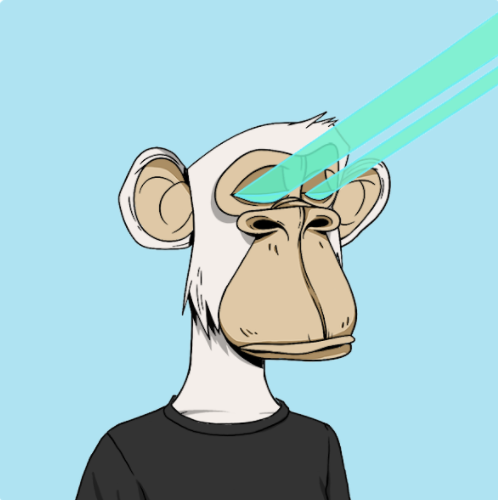On November 26, a pre-generated image of a monkey was sold for 1.2 million dollars—and that picture was far from the only one. Said image was #9449 in the “Bored Ape Yacht Club” NFT collection (OpenSea). Crypto currencies and similar digital assets have been gaining traction over the years, but it’s only recently that interest in NFTs has spiked. Everywhere you look it seems like people are spending hundreds of thousands of dollars—even millions—on NFTs. Celebrities like Post Malone and Jimmy Fallon have bought some, while many, like Shawn Mendes, Grimes, Doja Cat and Paris Hilton, have even made their own (Decrypt). But what even are NFTs? And why are they worth so much?
NFTs, or non-fungible tokens, are unique digital units that typically have some form of media attached, such as an image or video (Investopedia). Two NFTs can have wildly varying values, unlike interchangeable cryptocurrencies. They’re stored on specialized databases known as blockchains, which record when transactions occur. The multiple copies of the record and the way the data is stored theoretically makes tampering with the blockchain extremely difficult (Investopedia). While the blockchain record of a purchase serves as proof of ownership, it essentially only acts as a receipt. Buying an NFT doesn’t give you any rights to the media attached. The seller could easily make another NFT with a copy of the image attached—and it would still be “unique.”
Common criticisms of NFTs include concerns about art theft and art fraud. Artists often have their work turned into NFTs to be sold without ever seeing any of the profits (The Verge). Even if it isn’t their rights to the work being stolen from under their noses, artists are still having their works sold; selling multiple prints of artworks may be a common business practice, but that’s when the artist can control the process. Additionally, the anonymity offered in NFT trades can be easily exploited. It’s difficult to tell if the value of an NFT is legitimate, or if it’s a scammer buying their own work anonymously to artificially increase the price. To collectors, high interest, exclusivity, and uniqueness all contribute to an NFT’s value (Harvard Business Review).
The main concern with NFTs and other blockchain-based cryptocurrencies is their high energy consumption. Blockchain transactions use up a lot of energy by nature of their verification process. The most popular blockchain currency used for NFT purchases is Ethereum, where a single transaction uses enough electricity to power an average household for a week. But Ethereum is hardly the most egregious offender; a single Bitcoin transaction could power an average household for over 2 months (Digiconomist).
Whether you think the artistic value of these often AI-generated artworks are worth their exorbitant prices, the popularity of NFTs is undeniable. Investors and economists warn of a financial bubble — that NFTs are currently being overvalued (CNBC). However, amidst environmental and artistic concerns, the NFT bubble continues to grow.
https://opensea.io/assets/0xBC4CA0EdA7647A8aB7C2061c2E118A18a936f13D/9449
https://en.wikipedia.org/wiki/Non-fungible_token
https://www.investopedia.com/terms/b/blockchain.asp
https://www.investopedia.com/terms/b/blockchain.asp
https://digiconomist.net/bitcoin-energy-consumption/
https://digiconomist.net/ethereum-energy-consumption
https://www.nft-stats.com/collection/boredapeyachtclub
https://decrypt.co/86135/biggest-celebrity-nft-owners-bored-ape-yacht-club
https://www.theverge.com/2021/3/20/22334527/nft-scams-artists-opensea-rarible-marble-cards-fraud-art



